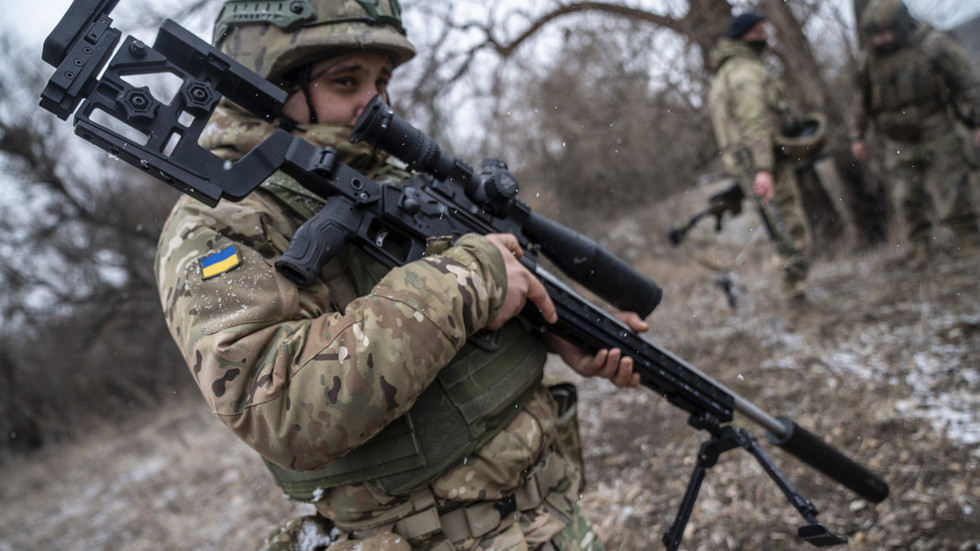Ukraine Ceasefire: A Turning Point? Insights from a Putin Aide


As tensions continue to simmer, a senior aide to President Putin reveals intriguing developments regarding a potential ceasefire in Ukraine. This commentary not only sheds light on diplomatic efforts but also raises questions about the future of peace in the region.
Ukraine Ceasefire: A Turning Point in the Conflict?
In a potentially significant development, a senior aide to Russian President Vladimir Putin has hinted at progress toward a Ukraine ceasefire, sparking cautious optimism amid the 18-month conflict. Yuri Ushakov, Putin’s foreign policy advisor, revealed ongoing backchannel discussions during a Moscow press briefing on Tuesday, though he emphasized “substantial disagreements remain.” The disclosure comes as Ukraine’s counteroffensive enters its third month with heavy casualties on both sides.
Diplomatic Overtures Gain Momentum
According to Kremlin insiders, secret negotiations involving Turkish and Chinese mediators have intensified since July. While neither Kyiv nor Moscow has confirmed direct talks, Ushakov’s comments mark the first public acknowledgment of ceasefire discussions from the Russian side since peace talks collapsed in March 2022.
“The parties are exploring a temporary humanitarian pause,” Ushakov stated, “but any lasting agreement requires addressing core security concerns.” He declined to specify terms but noted the proposed ceasefire would initially cover limited frontline sectors.
Recent data from the UN Office for the Coordination of Humanitarian Affairs shows:
- Over 9,000 civilian deaths verified since February 2022
- 16 million people requiring urgent humanitarian assistance
- 5.1 million internally displaced Ukrainians as of August 2023
Diverging Perspectives on Ceasefire Terms
Ukrainian officials responded cautiously to the Kremlin statements. “We welcome any genuine peace efforts,” said Foreign Ministry spokesperson Oleg Nikolenko, “but Ukraine’s territorial integrity remains non-negotiable.” Military analysts note Kyiv holds stronger bargaining power now than during earlier negotiations, having regained 54% of occupied territory since September 2022.
Meanwhile, Russian state media portrays the potential ceasefire as a strategic pause. “This isn’t about surrender,” argued military analyst Dmitri Trenin on Rossiya 24. “It’s an opportunity to consolidate positions and rebuild forces after Ukraine’s failed summer offensive.”
Western governments remain skeptical. A senior NATO official, speaking on condition of anonymity, told us: “We’ve seen this playbook before – Russia uses ceasefires to rearm and reposition. The key test will be whether they withdraw heavy weapons from occupied areas.”
The Human Cost of Continued Fighting
Frontline reports suggest both armies face mounting challenges:
- Ukrainian forces struggle with ammunition shortages despite Western aid
- Russian troops contend with low morale and equipment losses exceeding 50% in some units
- Civilian infrastructure damage surpasses $138 billion according to World Bank estimates
Dr. Irina Petrova, a conflict resolution specialist at the Geneva Center for Security Policy, observes: “The war has reached a painful equilibrium where neither side can achieve decisive victory through military means alone. This creates conditions for diplomacy, but the trust deficit remains enormous.”
Potential Roadblocks to Lasting Peace
Several sticking points could derail ceasefire efforts:
- Territorial Disputes: Russia currently occupies 18% of Ukraine’s internationally recognized territory
- Security Guarantees: Kyiv demands binding protections against future aggression
- War Crimes Accountability: The ICC has issued arrest warrants for Russian officials
Economic factors also loom large. With Russia’s GDP contracting 2.1% in 2023 and Ukraine’s shrinking by 35% since the invasion, both nations face mounting pressure to find exits from the conflict.
What Comes Next?
Experts identify three likely scenarios in the coming months:
- A limited winter ceasefire to ease humanitarian crises
- Prolonged positional warfare with sporadic negotiations
- Escalation as Russia seeks to preempt further Western arms deliveries
“The window for meaningful diplomacy won’t stay open indefinitely,” warns former US Ambassador to NATO Ivo Daalder. “All parties must decide whether they want a frozen conflict or a sustainable peace.”
As world leaders prepare for the UN General Assembly later this month, the Ukraine ceasefire discussions will undoubtedly dominate closed-door meetings. For civilians trapped in combat zones, the talks represent a fragile hope – one that could vanish with the next artillery barrage.
Stay informed with our daily conflict updates and expert analysis by subscribing to our newsletter.
See more BBC Express News
Recent Posts
The Future of Military Inclusivity: Will Trump’s Transgender Ban Stand?
Explore the implications of the transgender ban on military policy and national security.
Rubio’s Controversial Take on NATO: Are Allies Just ‘Junior Partners’?
Explore Marco Rubio's bold claim about NATO allies as "junior partners" and its implications for…
The MAGA Movement’s Ambitious Bid for Control Over D.C. Bar: What It Means for Democracy
Explore how the MAGA movement's bid for the D.C. Bar could impact democracy and legal…
Trump Administration Responds to New York Times’ ‘Sob Story’ on Convicted Migrant Kidnapper
Trump administration's backlash against New York Times' 'sob story' on a migrant convicted of kidnapping…
Is Trump Eyeing 2028? New Merchandise Sparks Speculation on His Political Future
Discover how Trump 2028 merchandise fuels speculation about his political future.
DNC Chair Takes a Stand: A Clash with David Hogg Over Primary Interference
DNC chair challenges David Hogg over primary influence, sparking a political debate.